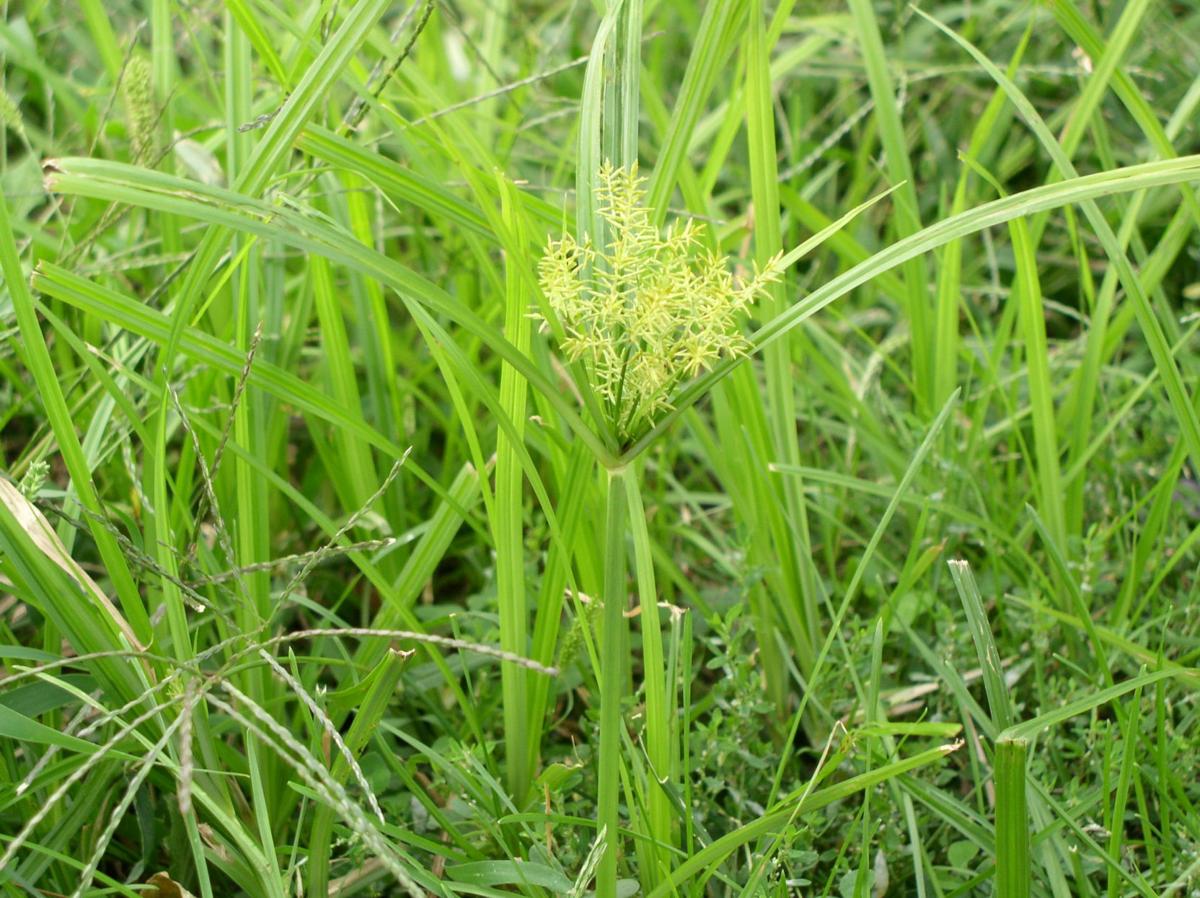Q: I had a lawn in bad shape and recently had it completely replaced with new more shade-tolerant Bermuda. However after a few days it is becoming a field of nutgrass. Apparently they did not remove enough soil. Now what? I read online that there are specific herbicides that can be applied weed by weed repeatedly, and they will eventually work. Do you have one to recommend? Will it harm the new turf? Or do we have to start over?
A: Nutgrass, aka nutsedge, is a prohibited noxious weed in Arizona. There are actually two species, yellow nutsedge (Cyperus esculentus) and purple nutsedge (Cyperus rotundus). Even though they are sometimes called nutgrasses, they are sedges rather than grasses. You can tell the difference by grabbing the stem. Grasses have round stems and sedges have triangular stems. We say, “sedges have edges” because it’s the easy way to remember. These are tough perennial weeds that reproduce by rhizomes and tubers that are sometimes called nuts or nutlets even though they aren’t; they only resemble nuts in size and shape. Management of nutsedge is difficult. The best method is prevention by making sure they don’t get delivered with topsoil or new plants. Once established there are some herbicides that have some effect on nutsedge populations. According to UA turf specialist, Dave Kopec, when you find nutsedge in bermudagrass, you can choose from a handful of herbicides that can be used on nutsedge. They include Image (imazaquin), Sedgehammer (halosulfuron), Monument (trifloxysulfuron), Certainty (sulfusulfuron), Katana (flazosulfuron), and Dismiss South (mixture).
Peter Warren is the urban horticulture agent for the Pima County Cooperative Extension and the UA. Questions may be emailed to tucsongardensage@gmail.com





